Potting Soil
By: Bruce Lindsay, Skagit County WSU Extension Master Gardener
As spring advances, gardening stores offer a multitude of soil mix choices. Selection can seem daunting, so we asked fellow master gardener and soils expert Bruce Lindsay to take us on a deep dive into what potting soils are made of and how to amend commercially bagged potting soils to ensure the best success in our container and raised bed plantings.
-- Ask a Master Gardener Editors
What exactly is in a bag of commercially produced potting soil?
The first step is learning the basics of soil. All soil primarily consists of sand, silt, and clay mineral particles. Sand is visible to the naked eye, ranging from 0.05 to 2mm in diameter, and is gritty to the touch. Silt is not visible to the naked eye and looks and feels like flour when it is dry. When it is wet, it feels like damp flour dough. Silt ranges from 0.002 to 0.05mm in diameter. Clay is the size of bacteria, less than 0.002mm, and has colloidal properties as the result of its net negative charge due to its crystal structure. In a natural setting, soils have pores made by plant roots and insects, which are essential for drainage and allowing air to enter the soil for roots to breathe. The size of the pores is also important for water movement and the soil's ability to retain water.
In contrast to well-balanced mineral soil, purchased potting soil typically has very few of these properties and has several problems. But take heart, armed with scientific knowledge, gardeners can remedy many of these deficiencies.
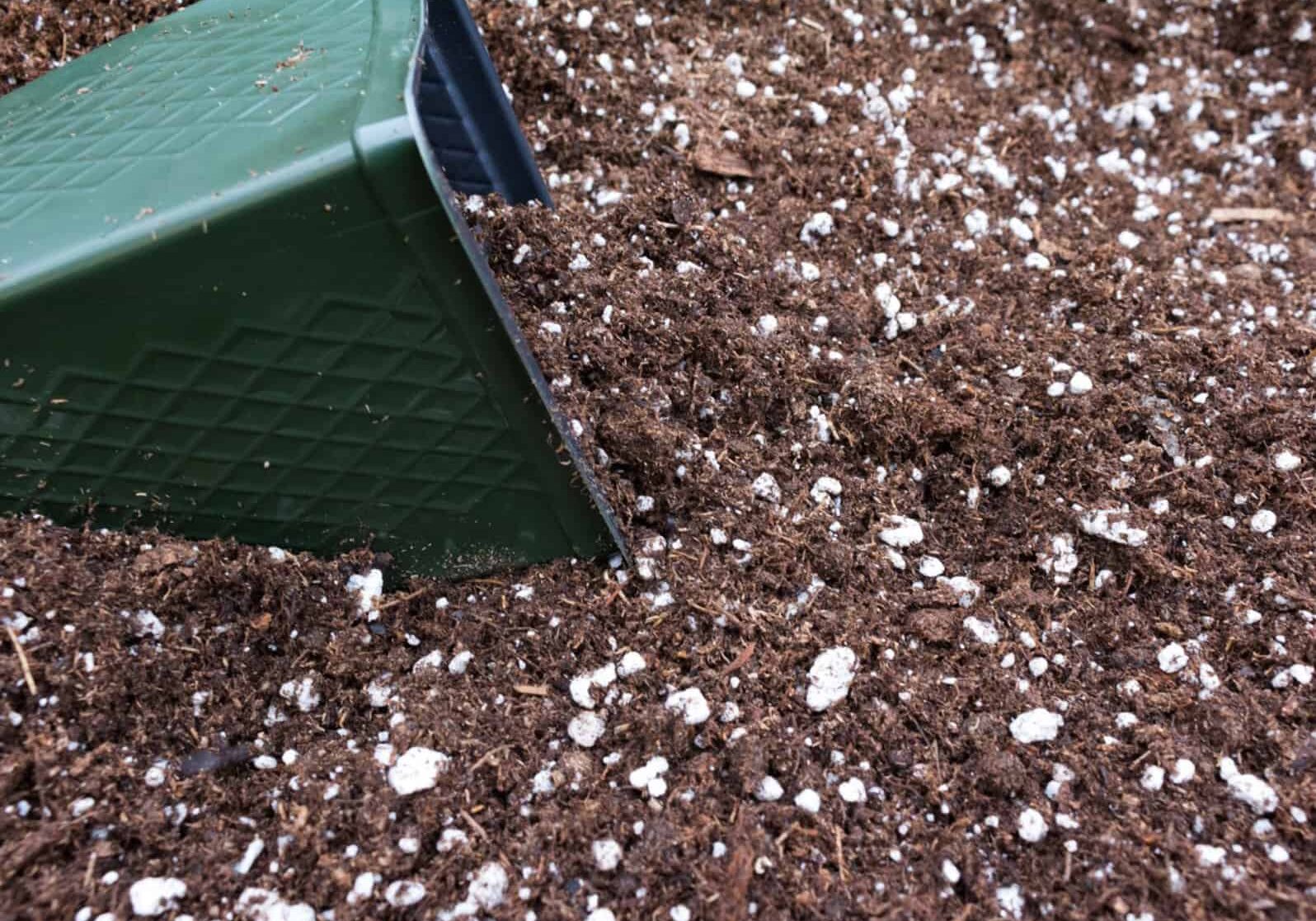
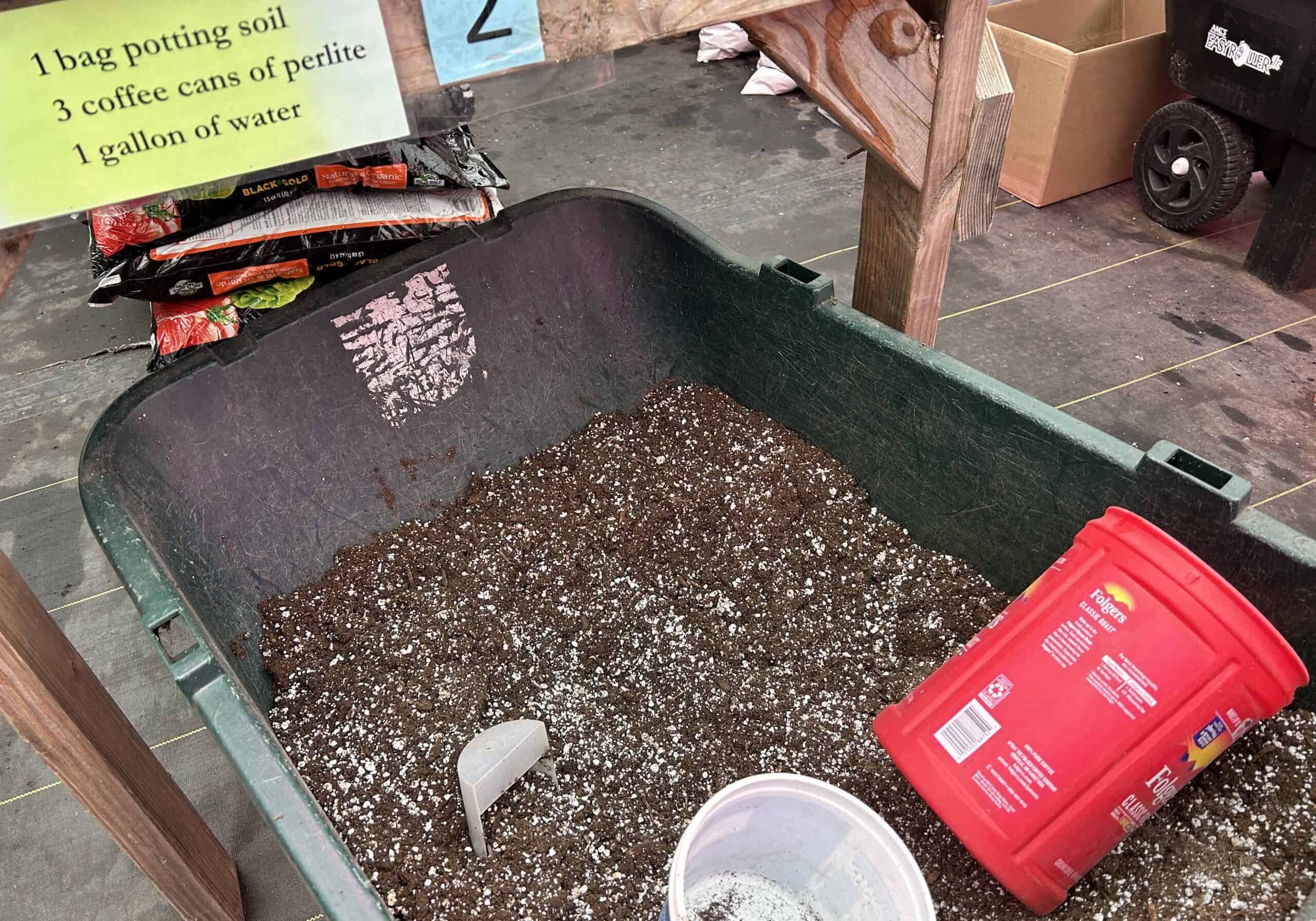
The vast majority of bagged "potting soil" (technically called a potting “medium” even though the label calls it “soil”) consists of ground wood and bark produced from recycled forestry products (RFP). Various commercially bagged soils are available, from coarse bark to multiple mixtures of RFP, peat moss, and other additives. In contrast, mineral soil products combine mineral particles of various sizes with some added compost. The potential hazard with some commercially bagged soils is the possible presence of weeds such as horsetail (Equisetum) and the potential presence of herbicides coming from landscaping sprayed with herbicide or hay fed to animals that has been sprayed and persists through a composted state and cause damage when used as potting soil.
Dealing with Nitrogen Deficiencies
Recycled forest products are commercially sold in large bark chunks as mulch and finer-grained material as potting soil. These products come with inherent problems that gardeners can solve with amendments. The first issue that must be addressed is the carbon-nitrogen ratio (C/N). The ground-up wood materials in these bagged soil products are often almost pure cellulose, and bacteria (microorganisms) love to eat it. When bacteria eat stuff, they make many more bacteria and require more nitrogen as they reproduce, which results in nitrogen deficiency, leading to poor plant growth.
Older leaves turning yellow while the young leaves are green is often a sign of nitrogen deficiency. Severe nitrogen deficiency results in a severe lack of growth and stunted plants. One must take care when adding nitrogen; too much will promote rapid growth and excessive foliage. It can be a tricky balance, but fertilizer with some phosphorous and potassium is best. Some fertilizers also contain micronutrients, which can be beneficial. Use a significantly diluted solution (1 TBSP per gal.) of soluble fertilizer and frequently monitor the plants to see how they are doing.
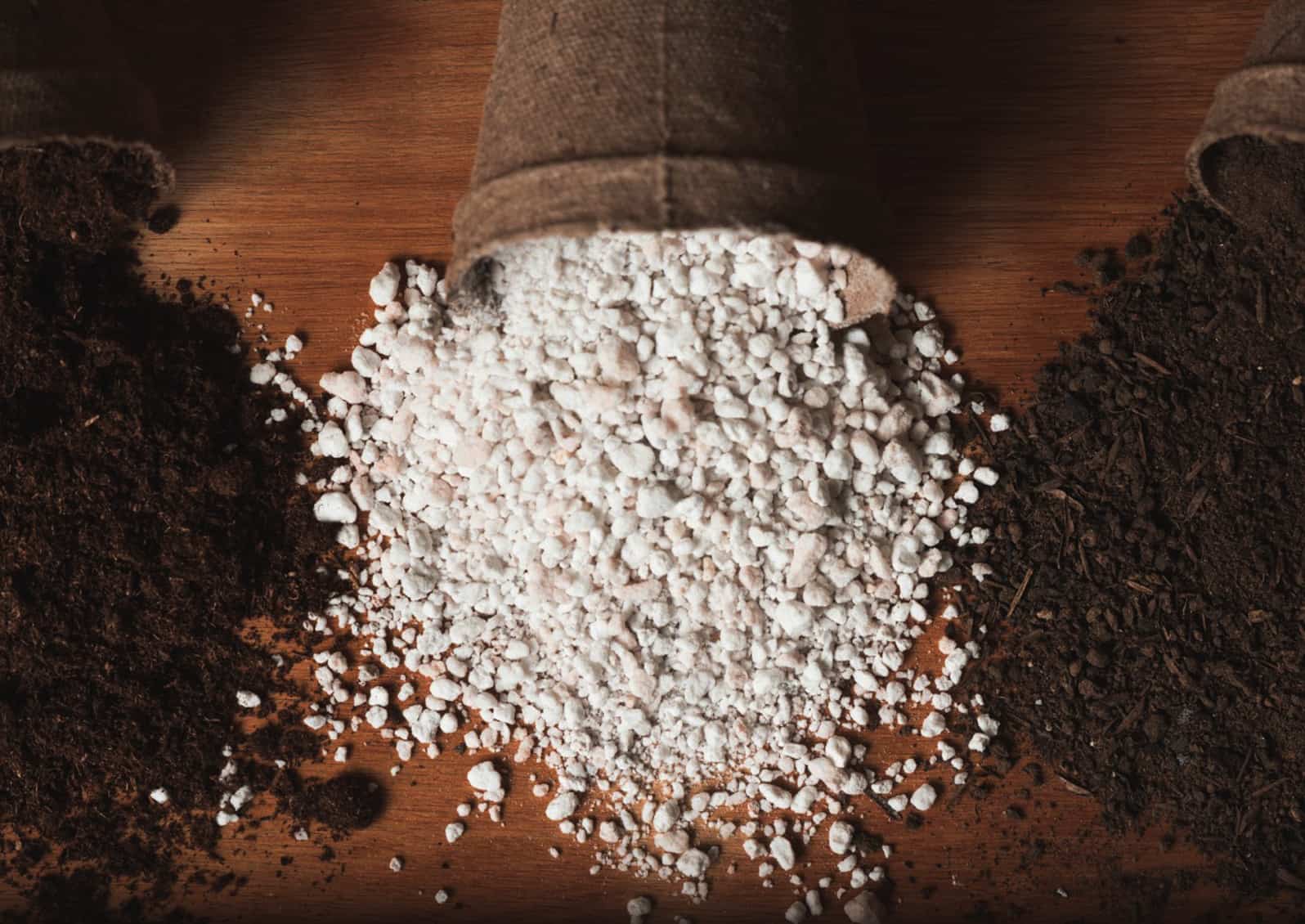
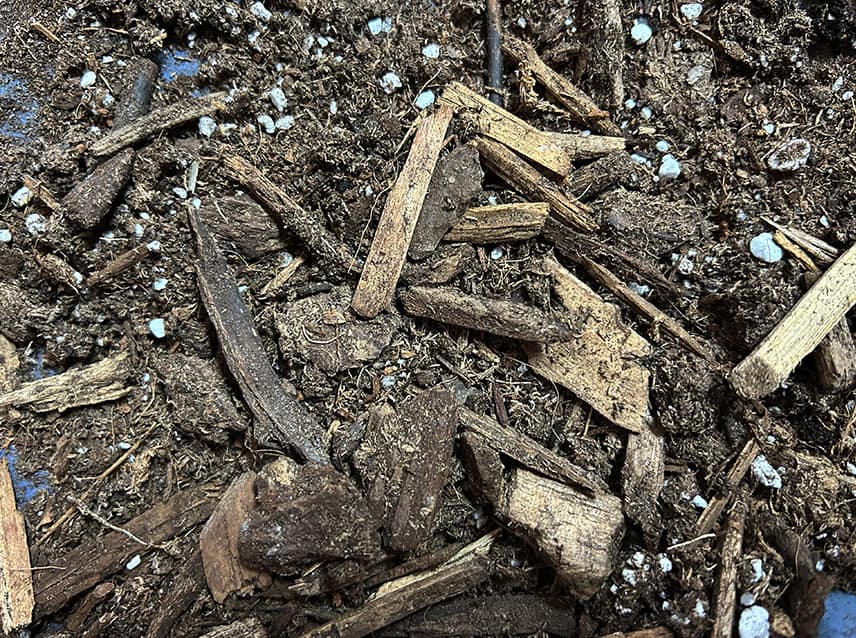
Since the recycled forest products used in commercially sold products are very porous, much of the fertilizer will drain through the pot in one application. To solve this problem, use well-composted materials containing organic matter or humus for effective nutrient retention. Well-composted materials should not include a lot of materials like straw and sawdust. Bacteria love sugars and cellulose, as in the "greens" of composting terminology, but bacteria have a hard time breaking down the "browns," which contain lignin. If there were only sugars and cellulose in composting, bacteria would consume everything, and nothing would be left. The compost "browns" in soils contain materials high in lignin, resulting in "humus" as the ultimate end product of composting. One benefit of humus is that it is very good at holding water. Another significant advantage of adding well-composted materials to a soil mixture is that it will also add beneficial bacteria and fungi that are essential for many processes, just as they are in healthy mineral soils. Another benefit is that humus has a net negative charge that can hold onto cations such as potassium, calcium, and magnesium, giving the soil cation exchange capacity essential to plant growth.
The Importance of Cation Exchange Capacity (CEC)
Balanced mineral soils contain clay particles with a negative charge that hold onto the cations. Bagged potting soils containing a heavy ratio of recycled forest products do not have any clay, so the cations get leached out. To amend this problem, add well-composted materials to the RFPs. Hydrogen ions are cations that stick to negatively charged humus particles like little magnets. When fertilizers are applied, the calcium, magnesium, and potassium displace the hydrogen cations and become stuck to the humus particles. Plant roots come along, exude acids, and displace the nutritional cations, which are absorbed by the root and go up into the plant.
Wikipedia defines CEC as:
Cation-exchange capacity (CEC) is a measure of how many cations can be retained on soil particle surfaces.[1] Negative charges on the surfaces of soil particles bind positively-charged atoms or molecules (cations), but allow these to exchange with other positively charged particles in the surrounding soil water.[2] This is one of the ways that solid materials in soil alter the chemistry of the soil. CEC affects many aspects of soil chemistry, and is used as a measure of soil fertility, as it indicates the capacity of the soil to retain several nutrients (e.g. K+, NH4+, Ca2+) in plant-available form. It also indicates the capacity to retain pollutant cations (e.g. Pb2+)
Many garden centers now carry a soil amendment called humic acid (or related substances, humin and fulvic acid). These are still the subject of much scientific debate. These compounds are created by alkaline extraction and are not naturally present in soil. While humic substances may have some positive effects on root growth, home gardeners are best advised to focus on the longer-term building of soil organic matter through carbon-rich amendments such as compost (or cover crops for garden beds), etc.
The Soil’s Capacity to Hold Water
It is essential to slow the water down so plants have the opportunity to absorb it. Fortunately, most ornamental plants and vegetables prefer well-drained soil and do not like being in standing water for very long. In contrast, due to their fibrous material, most hanging baskets need watering once a day.
Add popped perlite and/or vermiculite to the mix to increase water retention. Perlite is a volcanic glass, which, when subjected to heat and pressure, it changes, puffs up like popcorn, and forms many tiny pores that can hold water. Perlite is the little white balls often added to soil mixes.
Vermiculate is a naturally occurring mineral that is also heated to create the golden-brown cube-like material we see added to soils. Vermiculite draws in and holds water like tiny sponges throughout the soil. You can also use coconut coir as a moisture-holding material, but soak it thoroughly before adding it to a mixture.
The water-holding capacity of pelletized wool is an exciting new material being tested. Pelletized wool is composed of the short wool fibers from the underside of sheep where the wool is also much dirtier and has plant fibers embedded; it is not suitable for processing into fabrics. This material has been a waste product of the wool industry. Recently, however, research has shown that this material is a viable amendment to soil that improves the water-holding capacity of soil and provides some slow-release nutrients. Already sold commercially this material is pelletized for ease of mixing into soil and is a productive, sustainable use for a by-product typically diverted to a landfill.
The Addition of Slow-Release Fertilizers
Bagged potting soil products often offer slow-release fertilizer additives. Beware of those using tiny plastic beads to store the nutrients. Our soils do not need synthetic materials left behind. Instead, some products use fertilizers with a mineral coating, such as limestone or gypsum, that slowly dissolves, releases the inner contents, and does not leave behind plastic residue.
Other slow-release products consist of blood, bone, and feather meal, which are by-products of meat processing. The drawback of these materials is the smell they generate. They are acceptable when used in a field but not welcome on a patio in a hanging basket. Likewise, fish emulsion is a fairly slow-release fertilizer but also has a considerable odor problem. While it is an organic fertilizer, one must consider the odor it causes and that it is a by-product of overfishing of oceans.
Adding ground limestone to the mix may be a good idea because the recycled wood product material tends to be on the acidic side. The limestone will add some alkalinity. Dolomitic limestone is even better, as it contains magnesium and will be a slow-release source of calcium and magnesium. Be sure to mix it well with the potting soil. About a cup per cubic yard should be enough. If you have access to a pH tester, use it! The soil pH indicates the availability of essential nutrients needed for plant growth. Ideally, potting soil should have a pH of about 6.5. It is important to test the pH of your soil mix before adding an amendment to raise or lower the pH.
Basic food waste from the farming, grocery, and restaurant industries is a readily available slow-release fertilizer. It is stunning that forty percent of our food production goes into landfills. An alternative is an organic liquid product made from fermented food and vegetable waste. It doesn't stink and smells good, somewhat like soy sauce. With landfills overflowing, diverting food waste into soil improvement and garden production is one way to improve our environment.
Some people think replacing their potting soil with fresh material each year is necessary. This is only the case if there are disease issues. For instance, potting mix used for tomatoes or potatoes should not be used again for those plants because they are both susceptible to soil borne diseases. After a season of growing and watering, all the nutrients have leached out, but you can easily replace the nutrients by using the dilute fertilizer solution mentioned above. If the soluble fertilizers are too concentrated and the plants are not utilizing them, they may accumulate as salts. As time passes, some of the RFP in the potting soil will get eaten by bacteria, and the volume will decrease. In this case, add new potting soil with the amendments and mix it well with the original soil, spreading the nutrients around.
These recommendations apply to soil used in containers, raised beds and hanging baskets. It also applies to starting seeds in trays, but the seed starting soil material should be very fine to ensure good contact between the seed and the moist growth medium. When starting seeds, the soil should also drain fast enough so a fungal damp-off situation does not develop. Sphagnum peat moss tends to float to the top when watered and begins to clog pores, making it difficult to get moisture down to the bottom of the cell. Sprinkling fine vermiculite on the very top of each cell can help prevent these problems.
While forestry products recycled as commercial potting soil have drawbacks, amending these insufficiencies is an easy process. It is much better to use RFP products than to burn, bury, or dump them into the overflowing waste stream. Armed with awareness of the limitations of modern "potting soil" and knowing some remedies, gardeners can buy these products feeling confident with scientific knowledge.
REFERENCES AND RESOURCES:
Beck, L. (2023). ‘Waste Wool’ is a Burden for Farmers. What if it Could be a Solution Instead? Retrieved from https://modernfarmer.com/2023/11/waste-wool-solution/
Brady N., Weil, R. (2017). The Nature and Properties of Soils. London, UK. Pearson Education (15th ed.)
Lehman, J., Keber, M. (2015). The Contentious Nature of Soil Organic Matter. Nature volume 528, pp 60-68. https://www.nature.com/articles/nature16069
ABOUT THE AUTHOR :

Bruce Lindsay became a Skagit County WSU Extension Master Gardener in 2015. With an MS degree in geology and an MS degree in soil, he has mapped soils in Nevada, Arizona, California, and Washington.
Questions about home gardening or becoming a Master Gardener may be directed to: Skagit County WSU Extension Office, 11768 Westar Lane, Suite A, Burlington, WA 98233; by phone: 360-428-4270; or via the website: www.skagit.wsu.edu/mg
Upcoming Skagit Master Gardener Foundation Events:
Know & Grow:
Growing Roses in Skagit County – Free
Presented by Virgene Link-New
April 16, 1 p.m.
NWREC Sakuma Auditorium
(16650 State Route 536, Mount Vernon)
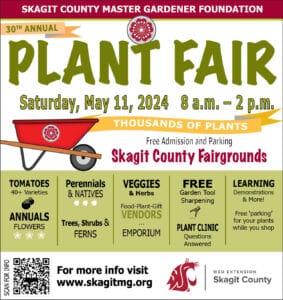
Free Admission & Parking
May 11, 8 a.m. to 2 p.m.
Skagit County Fairgrounds
Learn More >
A Second Act for Your Square 1-Gallon Pots at the Discovery Garden!
Bring your leftover square 1-gallon pots to the Discovery Garden (16650 State Route 536, Mount Vernon). The bin for recycling the square 1-gal pots is located in the parking lot, just north (to the right) of the main entrance.
We only need square 1-gallon pots like the ones pictured below (bottom right). The recycling bin will be available now through fall. Simply put your pots into the bin, and we take care of the rest!
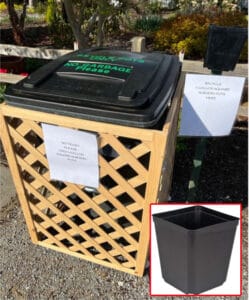

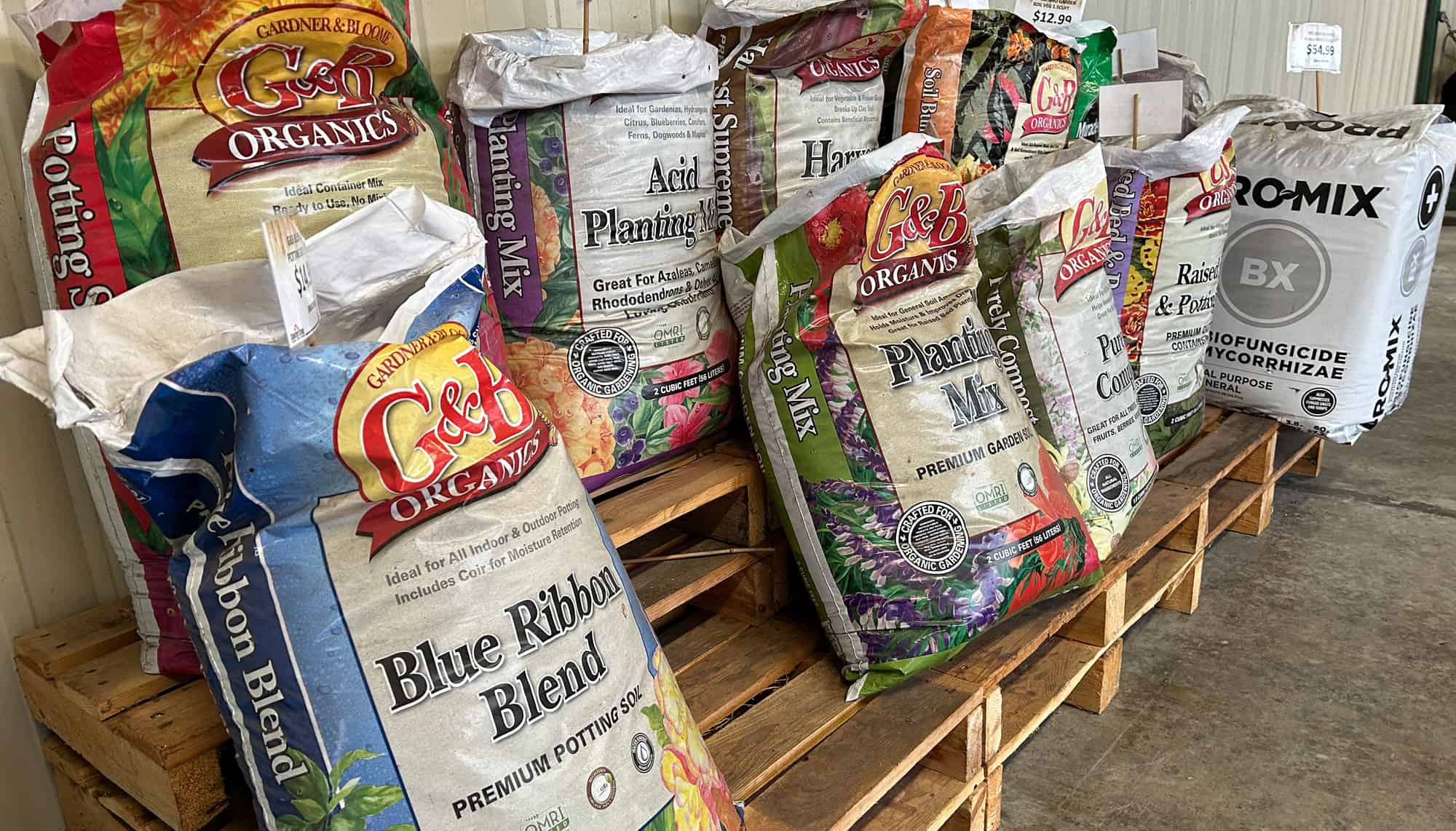
Really enjoyed this article by Bruce Lindsay, very informative, answered questions I had about potting soil. Thank you so much!
Very interesting, but not helpful to me as a home gardener. It is actually too much information. More helpful would be a recommendation for one or two good putting soil brands or one or two actions to amend bagged soil that will work well. I am not a scientist; feel like this was written for scientists, not me, a simple home gardener.
Thanks for your comments about the soils article. The editors are always working to understand our audience and the type of articles that are most relevant to readers. This was a ‘deep dive’, and while we can’t recommend specific products, your comment and the comments of others might lead to an additional article about how to read the contents listed on the back of a bag of potting soil, and make a decision based on what it says.